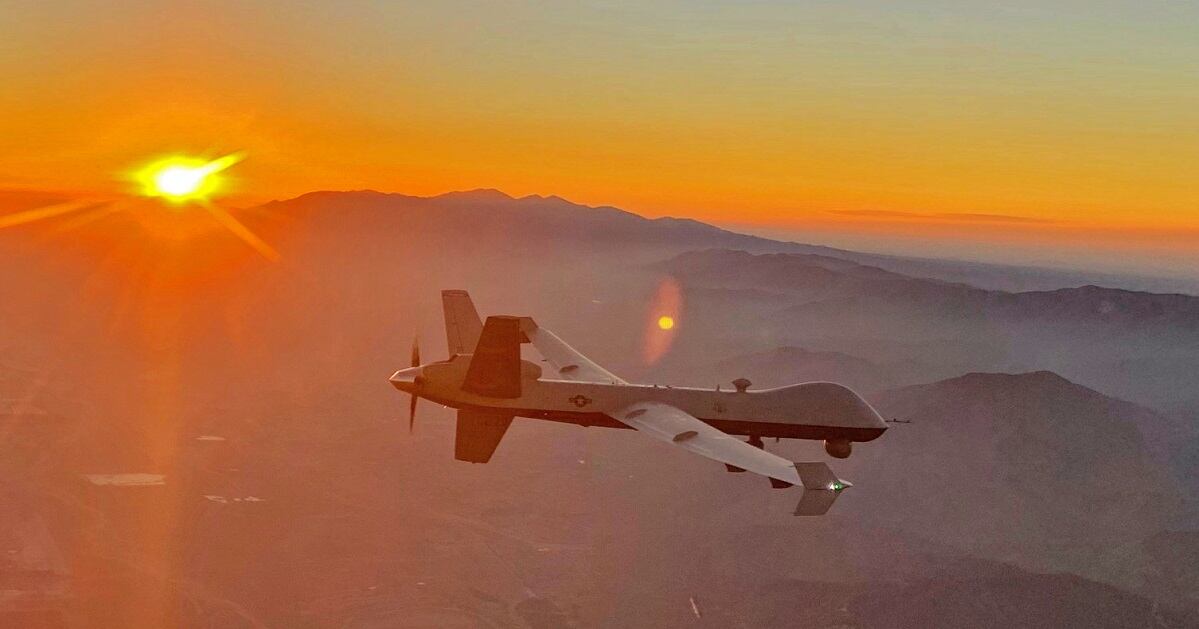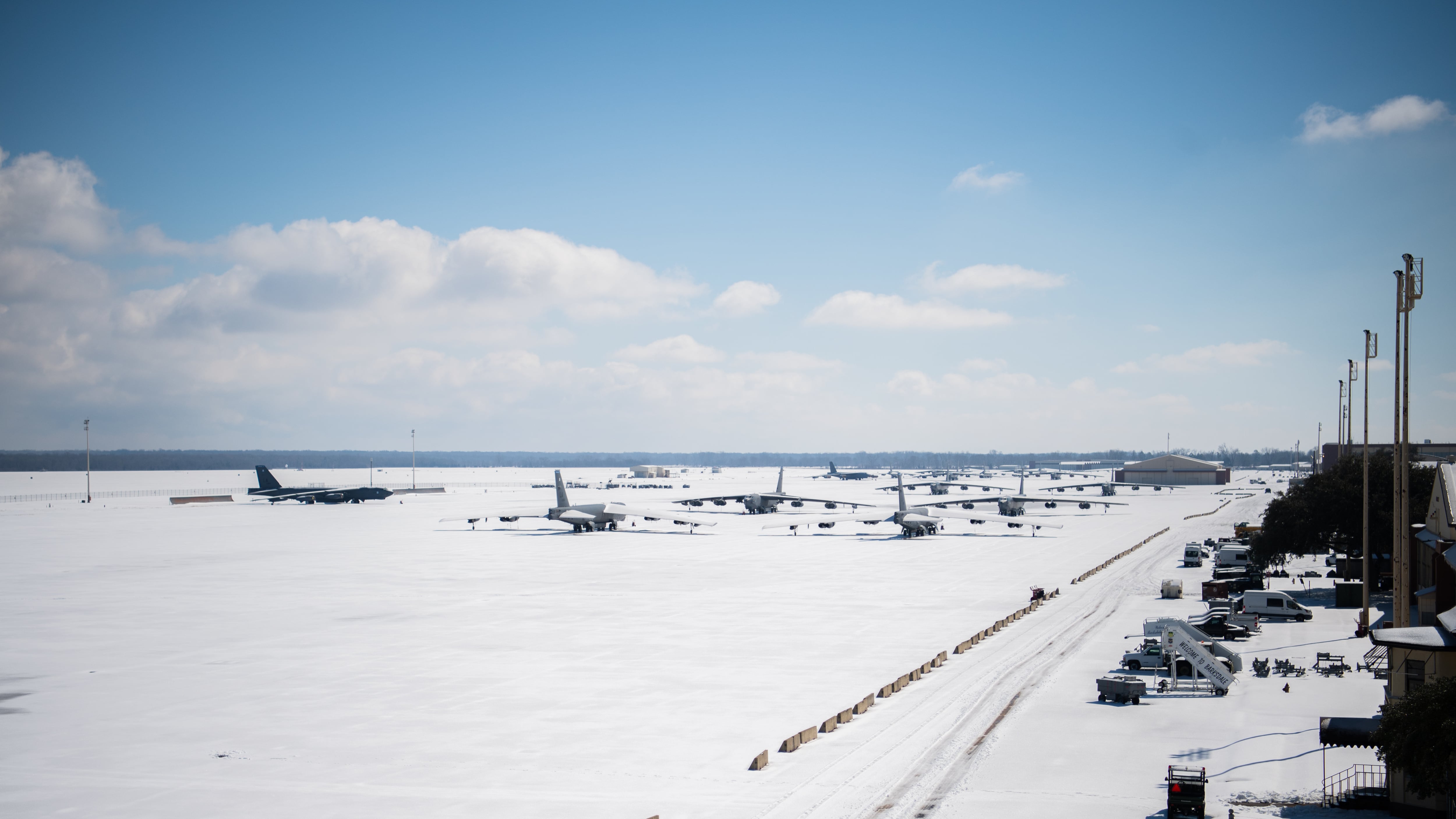The Air Force plans to funnel next year’s military construction dollars toward bolstering its facilities across Europe and the Indo-Pacific, as well as preparing to bring on a new generation of nuclear weapons, officials told lawmakers Tuesday.
The Air Force and Space Force remain “committed to European [Deterrence] Initiative efforts to reassure North Atlantic Treaty Organization allies and other European partners of United States commitment to collective security and territorial integrity,” Jennifer Miller, the Air Force’s acting assistant installations boss, and Brig. Gen. William Kale, deputy chief of staff for logistics, engineering and force protection, told a House Appropriations subcommittee in written testimony.
How much the service wants in 2022 will be revealed in President Joe Biden’s full budget request, due out later this month. In 2020, the Air Force received $5.3 billion for military construction — nearly four times more than the $1.4 billion it requested in 2021, which fell in line with the usual MILCON request of around $1 billion to $2 billion.
“[The Department of the Air Force] expects the FY22 program to return to a level similar to funding requests from previous years,” Miller and Kale wrote. “This return to previous funding levels will support the [department’s] commitment to fulfilling National Defense Strategy requirements and posturing for the future high-end fight.”
U.S. military leaders are particularly concerned about European installations as the Defense Department looks to counter Russian influence in that region, and about facilities in the Pacific that would be key to outpacing China.
RELATED

For example, the Air Force recently announced it would spend $152 million to continue establishing an enduring presence at 71st Air Base in Campia Turzii in Romania, which is projected to host C-5 and C-17 transport planes, MQ-9 Reaper drones and fighter jets.
Upcoming projects include a cargo pad that can support explosives, a new fuel storage facility, a command-and-control squadron facility, and more. The Air Force envisions Campia Turzii as a “rotational hub” where deployed troops and aircraft will cycle through Europe.
“The EDI program includes construction of airfield infrastructure and supporting facilities necessary to sustain the Air Force’s combat operations and surveillance missions while also increasing logistics capabilities in the theater,” Navy Capt. Scott Raymond, U.S. European Command’s Logistics Directorate chief engineer, said in a release.
In preparation for new fleets of ground- and air-launched nuclear missiles and the new B-21 bomber, USAF is laying the groundwork for an overhaul of intercontinental ballistic missile facilities and aircraft hangars. Officials praised Congress for legislative provisions it said will more easily pave the way for the Ground-Based Strategic Deterrent.
Housing issues
Some of those priorities will require tradeoffs in other regions. The Air Force pointed to Okinawa, Japan, where it faces high construction costs for the more than 7,800 military family homes it manages.
Miller and Kale suggested cancelling projects the service no longer needs to pay for buildings in Japan, particularly those rendered unnecessary by changes in the Pentagon’s posture across Europe.
“The DAF continues to focus investment in the Okinawa housing inventory to provide adequate housing for all service members and their families residing on the island,” they wrote.
In separate testimony written for the same hearing, Chief Master Sergeant of the Air Force JoAnne Bass and Chief Master Sergeant of the Space Force Roger Towberman noted that almost 20 percent — or 2,900 of the 15,273 homes controlled by the Air Force — fall short of the Pentagon’s housing condition standards. They expect that figure to rise to 28 percent by 2026.
RELATED

The Air Force already faces a backlog of deferred facility repairs costing more than $30 billion. In 2019, it said it planned to demolish 5 percent of nonessential facilities rather than bear the cost to restore them. Natural disasters, most notably Hurricane Michael in 2018, have consistently added to the price tag of needed fixes over the past few years.
Some lawmakers are skeptical that the service is taking its massive infrastructure needs seriously enough or are asking to fund the right priorities, citing problems patched by duct tape and coat hangers. Panel chairwoman Rep. Debbie Wasserman Schultz, D-Florida, said about one-third of Air Force facilities are rated as poor or failing.
“If you’ve got a rundown place … why aren’t you asking to fix it?” Rep. John Carter, R-Texas, added. “If those bases are of no importance to the Air Force, then maybe we ought to have a [base realignment and closure] and save some money.”
Rachel Cohen is the editor of Air Force Times. She joined the publication as its senior reporter in March 2021. Her work has appeared in the Washington Post, the Frederick News-Post (Md.), Air and Space Forces Magazine, Inside Defense, Inside Health Policy and elsewhere.




